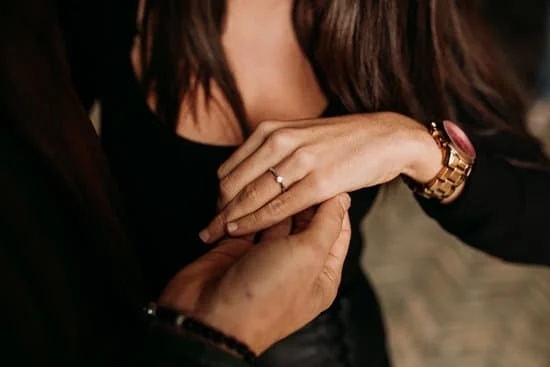If you’ve ever marveled at the intricate beauty of handmade jewelry, then you’ll be captivated by the craftsmanship and artistry of handmade jewelry in Kenya. The tradition of creating unique and exquisite jewelry by hand has been a significant part of Kenyan culture for centuries.
From vibrant beads to natural materials, the process of crafting these pieces is a true testament to the skill and dedication of Kenyan artisans. With a focus on authenticity, sustainability, and cultural significance, handmade jewelry in Kenya offers a window into the country’s rich heritage and artistic expression.
Kenya’s tradition of handmade jewelry dates back generations, with each piece telling a story of its own. The history of this art form is deeply rooted in indigenous practices and customs, making it an integral part of Kenyan heritage. In this article, we will explore the fascinating history behind handmade jewelry in Kenya and how it has evolved over time as a form of artistic expression and cultural significance.
From traditional Maasai beadwork to stunning bone carvings, authentic Kenyan materials play a vital role in the creation of handmade jewelry. The use of locally sourced materials such as brass, cow bone, recycled glass beads, and gemstones not only adds to the uniqueness of each piece but also supports local artisans and sustainable practices. By incorporating these materials into their designs, Kenyan jewelry makers are able to showcase the natural beauty and diversity of their country while preserving traditional craftsmanship.
The History of Handmade Jewelry in Kenya
One significant aspect of the history of handmade jewelry in Kenya is the influence of various communities and tribes. Each group has its own distinctive style, using unique materials and designs that reflect their traditions and beliefs.
For instance, the Maasai people are known for their intricate beadwork, creating bold and colorful ornaments that hold symbolic significance within their culture. Similarly, the Turkana community is renowned for their use of locally sourced materials like bone, brass, and beads to craft exquisite pieces of jewelry.
Another important historical aspect is the impact of trade routes and interactions with other cultures. Over the years, Kenyan jewelry makers have incorporated elements from Arab, European, and Asian influences into their designs, resulting in a diverse array of styles that appeal to both local and international markets. This blend of traditional craftsmanship with external influences has contributed to the uniqueness and beauty of handmade jewelry in Kenya.
The demand for authentic Kenyan handmade jewelry has grown steadily over time, not only as a fashion statement but also as a form of supporting local artisans and preserving cultural heritage. As a result, many skilled craftsmen and women continue to keep these age-old techniques alive while innovating new designs to cater to contemporary tastes.
Moreover, ethical practices and sustainable sourcing are becoming increasingly important considerations in the production process, ensuring that Kenyan handmade jewelry remains not only beautiful but also environmentally friendly and socially responsible.
| Handmade Jewelry Aspect | Description |
|---|---|
| Traditional Techniques | The skill and artistry of Kenyan jewelry makers have been honed over time. |
| Cultural Influence | Each community or tribe uses unique materials and designs reflecting its traditions. |
| Global Impact | External influences have resulted in a diverse array of styles appealing to both local and international markets. |
Authentic Kenyan Materials Used in Handmade Jewelry
Kenya is renowned for its vibrant and rich cultural heritage, which is beautifully reflected in the unique handmade jewelry crafted in the country. Kenyan artisans skillfully use a variety of authentic materials that are synonymous with the country’s traditions and natural resources, resulting in stunning pieces of wearable art. Here are some of the authentic Kenyan materials commonly used in handmade jewelry:
- Maasai Beads: The Maasai tribe of Kenya is well-known for their vibrant and intricate beadwork. Artisans handcraft these beads from local materials such as clay, glass, and bone, creating colorful patterns that hold deep cultural significance.
- Bone and Horn: Kenyan jewelry makers often incorporate ethically sourced bone and horn into their designs. These materials are expertly carved and polished to create exquisite pendants, earrings, and bracelets that showcase traditional craftsmanship.
- Recycled Brass: In line with sustainable practices, many Kenyan artisans repurpose brass from discarded items to create stunning jewelry pieces. This not only reduces waste but also adds a unique touch to each handmade creation.
The use of these authentic materials not only adds to the beauty and uniqueness of Kenyan handmade jewelry but also serves as a testament to the country’s rich cultural heritage and commitment to sustainable practices. Visitors to Kenya often seek out these one-of-a-kind pieces as souvenirs or gifts, appreciating the artistry and cultural significance behind each handmade item.
The Skill and Artistry of Kenyan Jewelry Makers
The art of handmade jewelry in Kenya is a skill that has been passed down through generations, with each piece crafted with intricate detail and precision. Kenyan jewelry makers are highly skilled artisans who take pride in their work, using traditional techniques to create unique and beautiful pieces.
Traditional Techniques and Expertise
Kenyan jewelry makers are known for their expertise in traditional beading, wirework, and metal forging. These artisans often learn their craft from family members or mentors within their community, honing their skills over years of practice. The result is stunning jewelry that showcases the mastery of these craftsmen.
Attention to Detail
One of the hallmarks of Kenyan handmade jewelry is the meticulous attention to detail present in each piece. From carefully selecting authentic materials to creating intricate designs, Kenyan jewelry makers infuse passion and artistry into every piece they create. This dedication to craftsmanship sets Kenyan handmade jewelry apart and makes each piece truly special.
Celebrating Individuality
In addition to their technical skill, Kenyan jewelry makers also bring their unique creativity to each piece they produce. Whether it’s incorporating vibrant colors or traditional patterns, these artisans celebrate individuality in their work, ensuring that no two pieces are exactly alike. This emphasis on creativity adds a personal touch to each handmade jewelry item, making it a meaningful and cherished accessory for its owner.
Cultural and Symbolic Meanings in Kenyan Handmade Jewelry
Kenyan handmade jewelry is not only a beautiful accessory but also carries deep cultural and symbolic meanings. Each piece of jewelry is intricately designed to reflect the rich heritage and traditions of the Kenyan people. From beaded necklaces to Maasai-inspired earrings, every piece tells a story that is deeply rooted in Kenyan culture.
In Kenyan culture, different materials and designs hold specific meanings. For example, the use of colorful Maasai beads symbolizes unity, beauty, and strength within the community. The Maasai people have been creating intricate beadwork for centuries, with each color and pattern holding its own significance. Similarly, cowrie shells are often incorporated into jewelry pieces as a symbol of prosperity and fertility in traditional Kenyan beliefs.
Furthermore, certain jewelry designs are reserved for special occasions or ceremonies within Kenyan culture. For instance, elaborate wedding necklaces made with intricate beadwork are worn by brides as a symbol of their marital status and serve as a reflection of their family’s wealth and social standing.
In addition to cultural symbolism, Kenyan handmade jewelry also often features symbols that hold spiritual or religious significance within various communities. Adorned with amulets or engraved with tribal motifs, these pieces serve as protective talismans or expressions of devotion to traditional beliefs. Whether it’s a beaded bracelet or a carved wooden pendant, each piece of handmade jewelry in Kenya is infused with cultural and symbolic meanings that connect wearers to their heritage in meaningful ways.
- Authentic Kenyan Materials Used in Handmade Jewelry
- The Skill and Artistry of Kenyan Jewelry Makers
- Sustainability and Ethical Practices in Kenyan Jewelry Making
Sustainability and Ethical Practices in Kenyan Jewelry Making
When it comes to handmade jewelry in Kenya, sustainability and ethical practices are key components of the industry. Many artisans prioritize using locally-sourced and sustainable materials in their creations, such as recycled brass, bone, wood, and beads. Additionally, these artisans often engage in fair trade practices, ensuring that they receive fair compensation for their work and that their working conditions are safe and ethical.
One example of this commitment to sustainability is the use of recycled materials in jewelry making. Artisans often repurpose old or discarded items into beautiful pieces of jewelry, reducing waste and environmental impact. This not only aligns with global efforts to promote sustainability but also reflects Kenya’s commitment to environmental conservation.
Furthermore, many jewelry makers in Kenya are dedicated to supporting their local communities through their craft. They often provide training and job opportunities for individuals, particularly women, empowering them economically. By promoting ethical practices and sustainable methods, the handmade jewelry industry in Kenya not only produces stunning pieces but also contributes positively to society and the environment.
| Sustainability Practices | Ethical Considerations |
|---|---|
| Use of locally-sourced and sustainable materials | Engagement in fair trade practices |
| Repurposing old or discarded items into jewelry | Providing training and job opportunities |
The Market for Handmade Jewelry in Kenya
In conclusion, the market for handmade jewelry in Kenya continues to thrive and expand, offering a wide range of unique and authentic pieces that reflect the country’s rich cultural heritage. Kenyan artisans have honed their skills over generations, creating stunning jewelry pieces that showcase the artistry and craftsmanship of the region.
The demand for handmade jewelry in Kenya is not only driven by its aesthetic appeal but also by the growing appreciation for sustainable and ethical practices in the fashion industry. Consumers are increasingly seeking out responsibly sourced and locally made products, making handmade jewelry from Kenya an attractive choice.
For those interested in acquiring genuine handmade jewelry from Kenya, there are various avenues to explore, including local artisan markets, boutique shops, and online platforms that support fair trade practices. By purchasing Kenyan handmade jewelry, consumers are not only acquiring beautiful pieces but also contributing to the livelihoods of talented artisans.
Overall, the market for handmade jewelry in Kenya is a testament to the enduring appeal of traditional craftsmanship and the ongoing ingenuity of Kenyan artists. It serves as a vibrant celebration of culture, creativity, and sustainability within the global fashion landscape.
Frequently Asked Questions
What Type of Handmade Jewelry Sells the Best?
The type of handmade jewelry that sells the best often depends on current trends and consumer preferences. However, in general, unique and custom pieces tend to attract more attention and higher sales. Pieces made from high-quality materials and with intricate designs also tend to perform well in the market.
What Are the Traditional Ornaments in Kenya?
In Kenya, traditional ornaments include beaded jewelry such as necklaces, bracelets, and earrings. These are often handmade by local artisans using colorful beads and intricate patterns. Additionally, Maasai people are known for their distinctive beaded accessories such as collars and anklets.
Is Handmade Jewelry Worth More?
Handmade jewelry is often worth more than mass-produced items due to the craftsmanship involved and the uniqueness of each piece. Customers are willing to pay a premium for handmade jewelry because of its individuality, quality materials, and the artistry of the maker. As a result, many consumers perceive it as more valuable than factory-made jewelry.

Welcome to my jewelry blog! My name is Sarah and I am the owner of this blog.
I love making jewelry and sharing my creations with others.
So whether you’re someone who loves wearing jewelry yourself or simply enjoys learning about it, be sure to check out my blog for insightful posts on everything related to this exciting topic!





